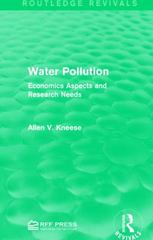2. Consider a homogeneous-product market where inverse demand is given by P=46-20 and the per-period cost function is C = 2q+32. The market lasts two periods and then it obliterates. Assume throughout that there is no discounting (i.e. the discount factor is 1). At the moment there is only one firm in the industry and it will be the only firm in period 1. Consider three scenarios. Scenario 1. The firm is protected from entry also in period 2. (a) Determine the firm's output and profits in each period. Scenario 2. There is a potential entrant who is considering entry in period 2 (with the same cost function as the incumbent). The incumbent, when it chooses its output in period 1, can commit to the same output in period 2. The commitment is credible and is observed by the potential entrant. (b) Is it possible for the incumbent to deter entry? (c) Write down the incumbent's total (i.e. for both periods) profit function (taking into account the entry and output decision of the potential entrant). (d) What output does the incumbent choose and what are its total profits? (e) Is there entry in period 2? Scenario 3. There is a potential entrant who is considering entry in period 2 (with the same cost function as the incumbent). The incumbent, when it chooses its output in period 1, cannot commit to the same output in period 2. In fact, the output decision in period 2 is independent of the output decision in period 1. (f) Is it possible for the incumbent to deter entry? (g) What output levels does the incumbent choose in the two periods and what are its total profits? (h) Is there entry in period 2?Section A 1. A monopoly with cost function C(Q) = @ faces two consumers, one with demand function D,(p) =1-2 and the other with demand function D,(p) =1-. The monopolist cannot tell which consumer has what demand function but knows the two demand functions. (a) Suppose that the monopolist decides to serve only one consumer by using a two-part tariff. What two-part tariff will it use and what will its profits be? (b) Suppose that the monopolist decides to serve only one consumer by using bundling. What bundle will it offer and what will its profits be? (c) Suppose that the monopolist decides to offer a menu of two two-part tariffs. What menu will it offer and what will its profits be? (d) Suppose that the monopolist decides to offer a menu of bundles. What menu will it offer and what will its profits be? (e) Rank the four alternatives (a)-(d) in terms of the profit that it generates for the monopolist. (f) Rank the four alternatives (a)-(d) in terms of consumer surplus. (g) Rank the four alternatives (a)-(d) in terms of total surplus








